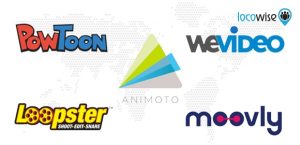We only want to market to the people who are most likely to be profitable customers right?
Grouping these people based on their common characteristics and how they best respond to marketing would make it easier to communicate with them, right?
This blog is about how businesses can use market segmentation as a strategy to reduce their marketing costs as well as getting better results. Attract more customers with more effective marketing.
What is Market Segmentation?
Market Segmentation is the act of grouping or cluster together customers within a target market who share similar characteristics, to give direction to marketing strategies to effectively target these customers. This process helps match customer wants and needs with your businesses’ ability to satisfy them. Segments are comprised of consumers groups that are likely to respond similarly to marketing strategies, helping brands optimise their marketing, advertising and sales.
“Market Segmentation is… the artificial groupings of consumers constructed to help managers design and target their strategies.” (Wedel & Kamakura, 2012)
Just think about how many different personality types there are out there. They will all have unique buying patterns to try and understand. One brand or product will never appeal to everybody or have the ability to solve every person’s unique problem. You need to consider what customer groups are most profitable to your business and focus on understanding their needs and providing the best solution. Then allocate your attention and marketing resources.
It is important to note the difference between customers and consumers. As defined by McDonald, Christopher, and Bass (2003):
“Let us start with the difference between customers and consumers. The term ‘consumer’ is generally interpreted to mean the final consumer, who is not necessarily the customer. For example, parents who buy breakfast cereals are probably the intermediate customers, acting as agents on behalf of the eventual consumers (their families). In order to market cereals effectively, it is imperative that the marketer understands what the final consumers want, as well as what the parents want.”
Segmentation helps businesses divide their target markets into smaller and more manageable groups of customers. This can help businesses make informed decisions not only on advertising, marketing and pricing but also new product development. The information uncovered from the research for segmentation can provide a new direction for innovation, based on providing a solution to customer needs.
Helping businesses focus their marketing efforts
A message can also become blurred and lost if the size of a target audience is too large. The broader their preferences, needs, desires and opinions become. Businesses need to define precisely who their customers are. When we sort these customers into segments, they become easier to prioritise and become more economically manageable. Businesses can target their marketing resources on the most promising opportunities and develop the right offer for those submarkets. Marketing this way becomes a lot more cost-effective than mass-marketing.
Communication with customer groups tailored to this audience so they are more receptive to the message. A segment might have age demographics as a characteristic. One segment may be young people fifteen and under, and another age group could be over 50 years of age. Video games for example. Marketing to people who grew up in the 1970s and 1980s playing video games would be drastically different from a young person of today growing up with a smartphone in hand.
Being more focused with the customers we target allows us to better cater to their specific wants, needs and desires. But it also allows a business to focus on their strengths. They might be better suited towards one segment of the market, and another business will be better suited to serve another segment. You will never be ‘all things to all people’.
Segmentation also reduces the risk of unsuccessful marketing campaigns. Many businesses uneducated in marketing have the idea that they will just “chuck something out there”, in the hope it will somehow reach the people most likely to be their customer. It does not work.
The research phase to understand our customer helps ensure that our marketing strategy is going to reach the customers in a way they will have a positive response to.
The importance of research
Knowing where your sales and profit is coming from is key to a business understanding their current market position and to assess any potential market directions. Research gives direction to marketing strategy and any potential new product development if the research uncovers a gap in the market. Once we better understand the market better, we aim to leverage this by optimising our marketing and sales processes.
Businesses can use quantitative research methods such as customer surveys and data analysis, as well as qualitative research such as focus groups to do market research to set their segmentation strategy. Interpret the results to create market segments unique to your brand.
Segmenting a marketplace
Businesses derive market segments from the diverse nature of customer motivations. Developing market segmentation strategies depend on the current market as perceived a business. Segments do not necessarily naturally occur in the marketplace instead marketers define segments based on the ability to best serve customers. Brands need to connect with their target customers through a tailored communication that resonates with specific aspects of their lives. Here are four popular ways a business can segment their target market.
Geographic segmentation
Targeting customers based on geography and location. E.g. The people of Hamilton, or maybe the whole of Australasia. Characteristics of buyers such as values and preferences vary based on culture and location, so it is important to recognise these subtle differences. Holidays and religious events differ in importance and the way the local people celebrate these holidays. Languages change between continents and some things lost in translation. Geography and climate can change drastically within one country, such as the US, that have states that are tropical and states that are freezing. This means swimsuits should not have the same marketing campaign across the whole country. Same with raincoats.
Demographic segmentation
Characteristics of demographic segmentation include age, gender, family background, religion, education, occupation and income. Using demographics to segment customers is widely popular as a marketing strategy, and a market segment can contain a range of varying demographics. For example, it could females aged 15–25, with numerous siblings, low socio-economic background, from Latin America with Christian religious beliefs.
Age is a common variant that brands try to understand and communicate accordingly through the most relevant and effective tools. For example, a product targeted at B2B professionals aged 40–60, would not be advertised on TikTok. LinkedIn would be the most logical communication tool or network.
Psychographic segmentation
The segmentation of customers based on Psychographic variables focuses on subjective traits and behaviours, unlike Geographic and Demographic variables which are objective and measurable. The focus is on intrinsic characteristics of customers. For example, a person who grows up on a farm, who will work on the farm until they take it over from their parents and never get a university education; will be quite a lot different to a person who grew up in a big city, going to a private school, with an expectation to get a university degree in law or medicine.
Qualitative research is a powerful tool to understand the psychographic tendencies of our target customers. Interviews, surveys and focus groups for example. This will help us understand subjective traits such as values, personalities, interests, attitudes, motivations, lifestyles, and opinions.
Behavioural segmentation
Behavioural segmentation is like psychographics in the sense it is subjective, but the focus is on how customers react to marketing and go through their decision-making and buying process. Their attitude towards brands and purchasing behaviour are examples of behavioural segmenting. This kind of data is collected through qualitative research. Talk to your customers and find out what makes them tick. You can also check online reviews.
Brand loyalty is an example of a behavioural segmentation. I used to always buy Sony electronics automatically without doing any research. Stereos, TV, phones, video game console, Walkman, Discman… The list goes on. This was because of the trust I had in the quality of their products from previous experiences. This consistent buying pattern is behaviour, and something marketers work hard on to try and create.
Criteria to evaluate the effectiveness of market segments
Not all market segments will end being as profitable as hoped for a business. Wedel and Kamakura (2012) identify six criteria often used to evaluate the effectiveness and profitability of a marketing strategy. Identifiability, Substantiality, Accessibility, Stability, Responsiveness and Actionability.
· Identifiability is the extent to which a business can recognise a distinct group of customers in the marketplace. Can we identify the customers in each segment based on variables we can measure?
· Substantiality identifies whether the target segment of the market is a large enough portion to justify targeting it. Is there enough of a return on investment? Micro-markets can become profitable because of lower marketing costs.
· Accessibility is the degree to which businesses can reach their designated segment through promotion and distribution. Can you reach them with your message?
· Stability of your segments over time should be a basis for a marketing strategy. If the segment you are targeting changes their behaviour during implementation, then this market segment is unlikely to be profitable to your business.
· Responsiveness is if a market segment responds favourably to your marketing. It is critical for any segmentation strategy that the unique marketing mix for each segment justifies the effort.
· Actionability of segments guides specific marketing choices. Here the focus is on whether the customers in the segment and the marketing necessary to reach them and satisfy their needs, is consistent with the firm’s goals and strengths.
Segmentation Mistakes
A big mistake that businesses make when they segment their customers is becoming too niche with their segments. No matter how good your product or service is, if there are not enough customers to buy it, you will not survive. All market segments must be profitable.
When you start to do more research on one of your segments to find out more about their needs, you can discover you do not have resources or skills to take advantage of that opportunity. Focus on the strengths of your business when setting your segmentation strategy. There may be opportunities out there, but if you do not have the resources or skills to take advantage of it, you are wasting your time and money. If there was an opportunity in the high-end luxury sports car market, for example, KIA would not try and target that niche, because is too far removed from their “bread and butter”.
Keep up with trends and changes in behaviour from your customer base. Blockbuster had the opportunity to purchase Netflix 20 years ago for $ 50 million… They said no. Netflix is now worth almost $ 200 Billion. They should have seen where the video rental market was heading. Survey your customers from time to time and refresh your marketing strategies.
Thank you for reading. I hope you found this week’s topic on Market Segmentation useful. You can now use this knowledge to start segmenting your target market!
Business & Finance Articles on Business 2 Community
(160)






